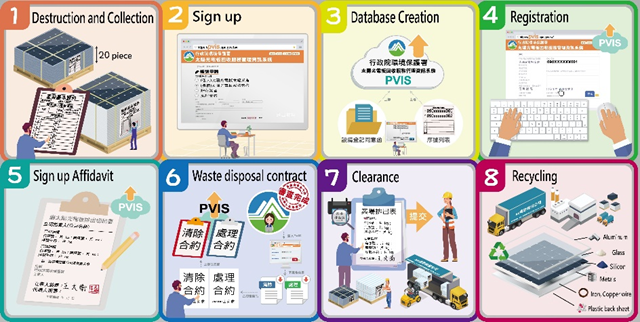●Asbestos
Asbestos is a natural, crystalline silicate mineral fiber used primarily in construction materials. When used in intact structures, it poses a low health risk. However, after removal, it can become easily airborne and is classified as hazardous waste. Asbestos is commonly used in the construction industry, as well as in the equipment, textile industry, and as filling and insulation materials.
Asbestos was classified as a Class 2 toxic chemical substance in Taiwan since May 1989. Taiwan has been gradually phasing out the use of asbestos, with more stringent regulations on concentration levels announced in 1998 and a ban on asbestos-containing construction materials in 2006. The raw material of asbestos was banned entirely in 2018 (except for research, testing, and educational purposes). On October 4, 2022, Taiwan announced the "Restriction on the Import of Asbestos-containing Products," which came into effect on May 1, 2023, achieving comprehensive control over asbestos raw materials and products. Since 2023, Taiwan has been promoting subsidies for the clearance and disposal of asbestos tile waste from buildings. Local governments receive subsidies to process applications from the public for the clearance and disposal of asbestos building waste, guiding the proper handling of asbestos waste. Additionally, Taiwan is advancing the proper management of asbestos waste. Currently, asbestos and its product waste (waste code: C-0701) are subject to "solidification treatment" before being buried.
●Solar Photovoltaic Panels and Wind Turbine Blades
With the negative impact of climate change, the world has begun to initiate accelerating greenhouse gas reduction and renewable energy development. Taiwan mainly focuses on how to maximize the utilization of renewable energy, especially solar photovoltaics in conformity with "Energy Transition" strategy, one of the strategies of "Taiwan's Pathway to Net-Zero Emissions in 2050". According to the Ministry of Economic Affairs Energy Administration's statistics, the estimated cumulative installed capacity will reach 20 GW in 2025 and 40 to 80 GW in 2050 expected. Policy orientation driven, it is estimated that when waste solar photovoltaic panels are decommissioned in the future, the waste output will reach more than 100,000 tons in 2039.
Since 2000, Taiwan has been promoting the development and application of wind power. The Energy Administration has promoted it through the "Installation of Wind Power Demonstration System Subsidy Regulation" and later changed to the "Purchase of Renewable Energy Electricity Operation Directions" as an incentive of installation. According to the "Taiwan's Pathway to Net-Zero Emissions in 2050" published in 2022, Taiwan's wind power capacity will reach 6.9 GW by 2025, increasing at a rate of 1.5GW per year until it reaches a target of 40-55GW cumulatively by 2050. At the end of the usage life, there will be a need for the disposal and recycling of wind turbine blades. It is expected that from 2041 onwards, more than 10,000 tons will be discharged annually.
In the light of the needs for promoting the reuse and proper disposal of subsequent waste resources derived from renewable energy, the Resource Circulation Administration(RECA) and the Energy Administration jointly plan an appropriate disposal mechanism for waste solar photovoltaic panels and wind turbine blades. After the Energy Administration collects recycling fees supports the RECA in organizing the operation by commissioning relevant industry association matches waste clearance and disposal organizations' treatment. When the project site owners want to dispose of the waste solar photovoltaic panels, they need to dismantle the waste solar photovoltaic panels by themselves, stack them properly according to the regulations, and submit them to the RECA's "Waste Solar Photovoltaic Panel Recycling, Cleaning and Disposal Information System" to carry out disposal registration. Afterward, the mentioned association will match waste clearance and disposal organizations and schedule the transportation of waste solar photovoltaic panels to the designated waste clearance and disposal organizations with permission for appropriate disposal (Figure 1).
 Figure 1. Appropriate Disposal Mechanism for Waste Solar Photovoltaic Panels
Figure 1. Appropriate Disposal Mechanism for Waste Solar Photovoltaic Panels
- Source:
- Ministry of Environment
- Updated:
- 2024-01-23
- Hit:
- 445